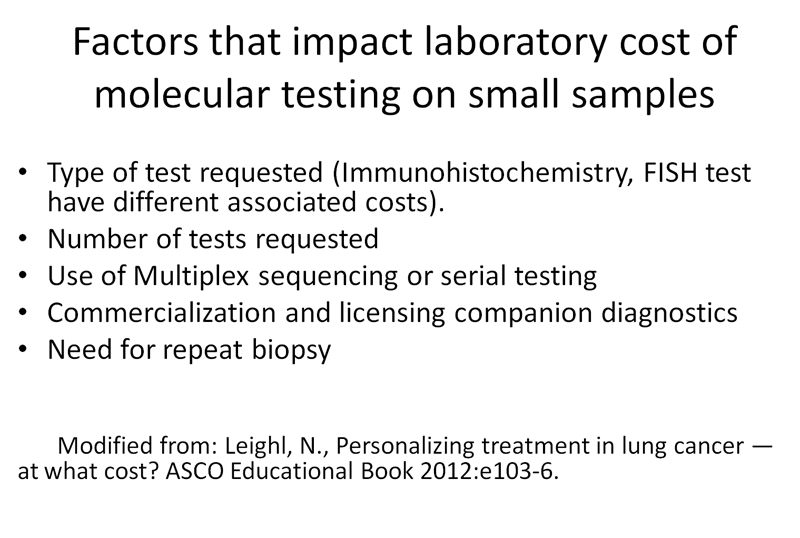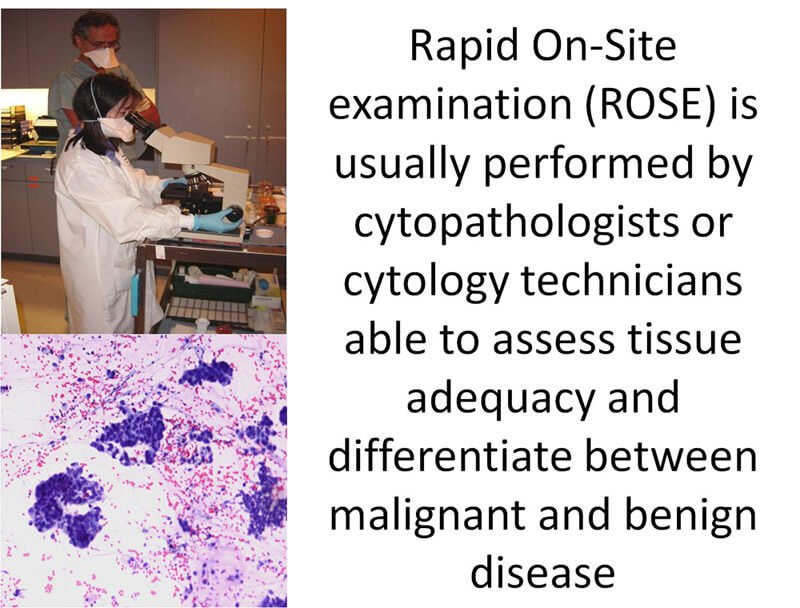 | . | Step 24 of 41 |
 |
Clinical Stem 3
A patient with right upper lobe adenocarcinoma progressing on biomarker-directed therapy
A patient with right upper lobe adenocarcinoma progressing on biomarker-directed therapy
Answer A
Performing TBNA at all cost by changing the puncture site again, prolonging the procedure, or switching to conventional TBNA may not be in the patient's best interest for at least two reasons: tissue can be obtained from another site of likely disease progression; in this case the enlarging right upper lobe mass, and multiple repeated needle aspirations are likely to result in a bloodier specimen that will be difficult to analyze.


The safety of obtaining a biopsy must be weighed against the need to select biomarker-driven therapy in fragile patients with lung cancer who often have significant cardiac and pulmonary comorbidities.
References:- Maheswaran S, Sequist LV, Nagrath S, et al. Detection of mutations in EGFR in circulating lung-cancer cells. N Engl J Med. 2008 Jul 24;359(4):366-77.







